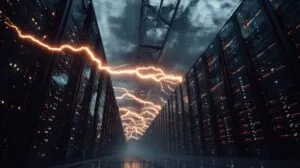Guns spark strong emotions across the spectrum—some see them as essential tools of protection and freedom, others as symbols of danger and risk.
And honestly, both camps have points worth considering. In the U.S., gun ownership isn’t just about hardware—it’s about heritage, personal rights, safety, and sometimes survival.
But it also comes with consequences, both obvious and hidden. Let’s break it all down.
Table of Contents
ToggleKey Statistics
| Category | 2023 Data | Notes |
| Total Gun Deaths | 46,728 | Encompasses homicides, suicides, accidents |
| Gun Suicides | 27,300 | Nearly 58% of all firearm deaths |
| Gun Homicides | 17,927 | Roughly 38% of the total |
| Mass Shooting Deaths (4+ shot) | 722 | Small fraction but widely publicized |
| Hunting Participation (2021) | ~13.8 million | 4.6% of U.S. population aged 6+ |
| Annual Economic Cost | $557 billion | 2.6% of GDP, taxpayer share ~$12.62 billion |
Reasons Behind Gun Ownership

Self-Defense and Personal Safety
A large segment of firearm owners highlight self-defense as the main motivator. There’s a belief that keeping a gun on hand could save a life in an emergency.
Surveys provided by the Bureau of Justice Statistics estimate a range of defensive uses: some say as low as 55,000 per year, others mention figures above 1 million, and certain methods push totals into the millions.
Those figures show wide gaps, probably due to the variety of research approaches and questions asked. Even the more conservative estimates indicate tens of thousands of incidents annually where firearms might have thwarted burglaries, assaults, or other serious crimes.
Many find it comforting to feel prepared. Pew Research Center reported that around 72% of owners cite personal protection as a major reason for having a firearm.
That sentiment resonates across demographic lines: young, old, city-dweller, rural resident. Proponents emphasize that response times from law enforcement can vary, so a defensive strategy may hinge on personal preparedness.
Constitutional Rights and Traditions
Laws and historical documents also factor in. The Second Amendment of the U.S. Constitution speaks of a right to bear arms, and plenty of citizens interpret it as a broad guarantee of personal liberty.
Firearms symbolize self-reliance, a deeply held cultural value in many parts of the country. Strong support for upholding that right underlines debates around regulation, which often revolve around what restrictions are fair or needed to keep communities safe.
Some owners mention heritage and tradition. Children grow up going on weekend hunts with parents or grandparents, learning how to fire a shotgun at a range, or simply being around firearms as part of normal life.
Many of those families speak about passing down not only guns but also respect for them.
Also Read: Safest Countries in the World
Hunting and Sporting Activities
Hunting is a long-standing pastime with economic and conservation angles.
Around 13.8 million Americans pursued game in 2021, a figure that supports wildlife management efforts through license fees and taxes.
According to the U.S. Fish & Wildlife Service, approximately 14.4 million individuals aged 16 years and older participated in hunting activities in the United States in 2022.
Excise taxes from ammunition and equipment funnel into conservation initiatives, helping preserve forests, wetlands, and grasslands. Some point out that hunting was once seen primarily as a guy thing, but times have changed.
Recent studies show more women and people of color stepping into the field, turning it into a broader, more diverse pursuit than it was decades back.
Shooting sports also bring people together. Competitions range from precision rifle contests to trap and skeet events, all requiring training, discipline, and a healthy respect for safety rules.
Beyond the competition itself, enthusiasts highlight the camaraderie, saying it’s part of what keeps them hooked.
Advantages of Having Firearms

1. Enhanced Sense of Security
- Confidence in self-protection
- Potential deterrence against intruders
- Immediate response if police are far away
2. Constitutional and Cultural Heritage
- Embodiment of personal freedom
- Strong historical ties in the United States
- Family traditions that span generations
3. Hunting and Wildlife Conservation
- Funding of environmental initiatives through fees/taxes
- Meat provision for families
- Outdoor bonding experiences
4. Sports and Recreation
- Shooting competitions develop discipline and skill
- Clubs and gatherings build social networks
- Support for local economies tied to sporting events
Potential Dangers and Hidden Costs
High Incidence of Gun Violence
A leading drawback is the sheer number of firearm deaths. Data from 2023 indicates about 46,728 fatalities, including homicides and suicides.
That translates to a rate higher than in comparable nations. Accidental shootings also claim lives, sometimes involving children who manage to access unsecured firearms.
The presence of a gun in a household can increase the likelihood of suicide as well, given how lethal the method is compared to other attempts.
Mass Shootings and Public Fear
Although large-scale shootings are not the biggest portion of firearm-related deaths, they generate massive public concern.
High-profile incidents at schools, concerts, or workplaces can leave deep mental scars on entire communities. In 2023, the Gun Violence Archive reported 722 deaths from mass shootings (defined as 4+ shot), a small but highly visible portion of the 17,927 gun murders.
These events, including school shootings, create widespread fear, with 59% of teachers and 32% of parents expressing high worry levels, as per Pew Research Center.

Criminal Misuse
Firearms fall into the wrong hands through theft or illegal sales, leading to further concerns. Straw purchasing, where someone buys guns on behalf of another, remains a major law enforcement challenge.
Police work to shut down pipelines that move firearms to areas with higher crime and murder rates, but it’s an ongoing issue.
Guns are potent tools for criminals to intimidate or harm, and the consequences ripple out far beyond individual incidents.
Emotional and Psychological Strain
Exposure to shootings creates stress in communities, with many facing anxiety or depression afterward. Children may struggle if they witness violence or hear about it within their immediate circle.
Public health researchers point to higher rates of Post-Traumatic Stress Disorder (PTSD) among those who live in high-violence neighborhoods.
Some families face heartbreak after suicides or accidents, further fueling calls for better safety measures at home.
Economic Burden
According to Everytown, the nationwide cost of gun violence is roughly $557 billion annually. That figure covers hospital bills, legal proceedings, mental health care, lost income from victims, and other indirect expenses.
It’s about 2.6% of the GDP. On top of personal tragedies, taxpayers foot a portion of the bill (about $12.62 billion) for medical treatment of uninsured victims and subsequent legal processes.
Thoughts on Regulation and Safety
With Trump’s executive order “Protecting Second Amendment Rights” starting to take effect, we’re taking a look at what pro-gun actions the administration has taken so far, and where they can continue to focus.
Watch now: pic.twitter.com/dDYJHDgqVh
— Gun Owners of America (@GunOwners) March 21, 2025
Balancing the right to own a firearm with community protection is a major legal and cultural puzzle. Many states enforce background checks, licensing, and safety training, but not all policies are the same.
Some regions are stricter about concealed carry permits, while others have fewer requirements for purchasing. In places where laws are relatively lax, critics argue the lack of oversight leads to easier access by individuals who pose a threat to society.
Advocates of more regulation call for universal background checks, mandatory waiting periods, and measures to reduce straw purchasing.
Owners who favor fewer restrictions insist there’s already enough law on the books, urging improvements in mental health resources or better enforcement of current regulations instead.
Proposals around safe storage also appear in many legislative debates, aimed at lowering accidental shootings and suicides by restricting unauthorized access.
Summary
There’s no sugarcoating it—owning a gun comes with serious pros and cons. It can empower, protect, connect you to tradition, and even bring joy.
But it can also harm, burden, and destabilize if handled carelessly or without proper context. No matter what side of the debate someone lands on, the conversation needs less yelling and more listening.
More curiosity, less judgment. And most of all, an honest look at the numbers, the experiences, and the stakes. Owning a gun is a personal decision, but it’s never one that exists in a vacuum.
It affects communities, kids, safety, and even the economy. That’s why informed choices matter—and why this conversation isn’t going anywhere anytime soon.
References
- pewresearch.org – Key facts about Americans and guns
- pewresearch.org – What the data says about gun deaths in the U.S.
- law.cornell.edu – Second Amendment
- fws.gov – 2022 National Survey of Fishing, Hunting, and Wildlife-Associated Recreation
- doi.gov – New 5-Year Report Shows 101.6 Million Americans Participated in Hunting, Fishing & Wildlife Activities
- everytownresearch.org – The Economic Cost of Gun Violence
Related Posts:
- Safest Countries in the World in 2025 - GPI…
- 26 Most Dangerous Cities in US - Updated Statistics for 2025
- Capital Cities in Europe: Top Destinations For You…
- America's Murder Capitals: A 2025 Ranking of the…
- What Is the Most Dangerous Country in the World in 2025
- Most Dangerous Cities in Georgia for 2025 - 10…








